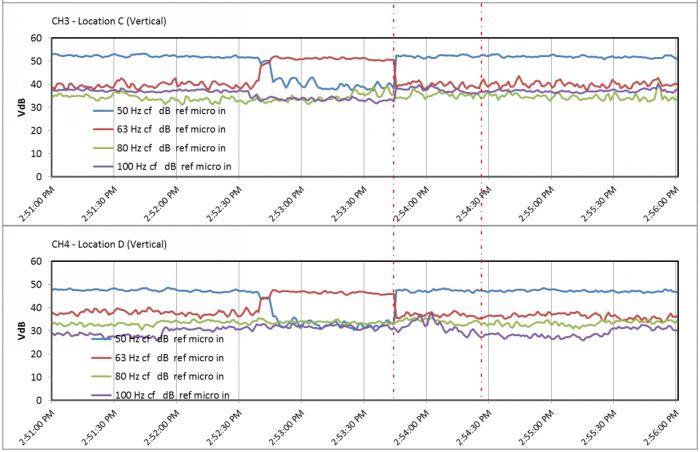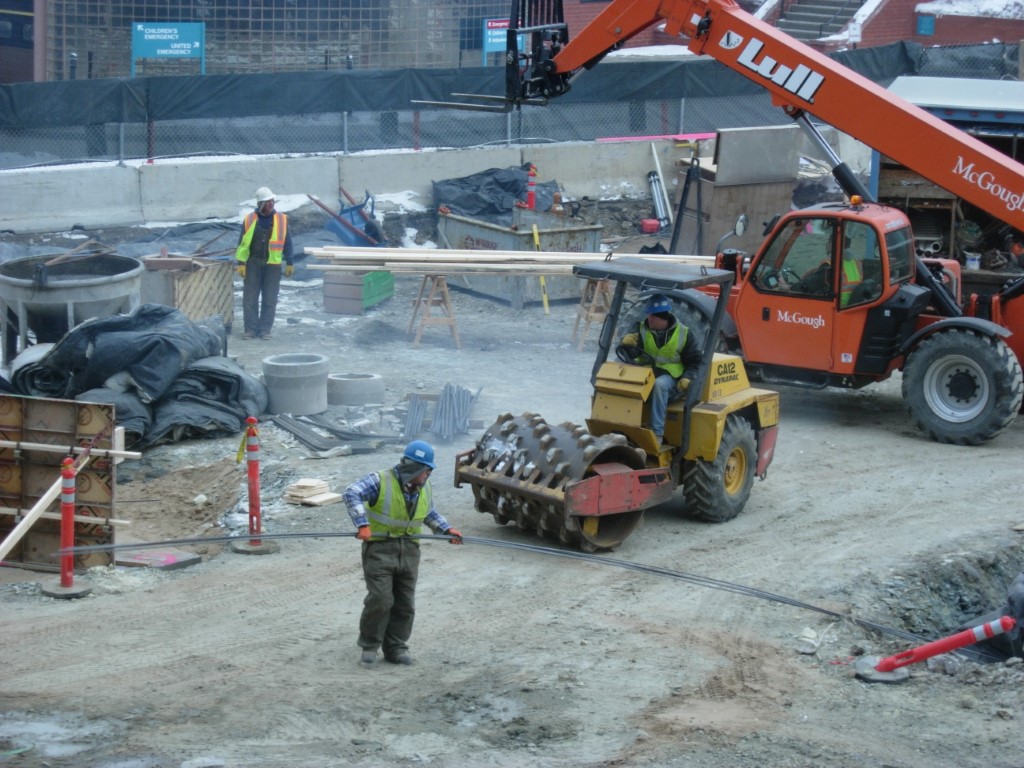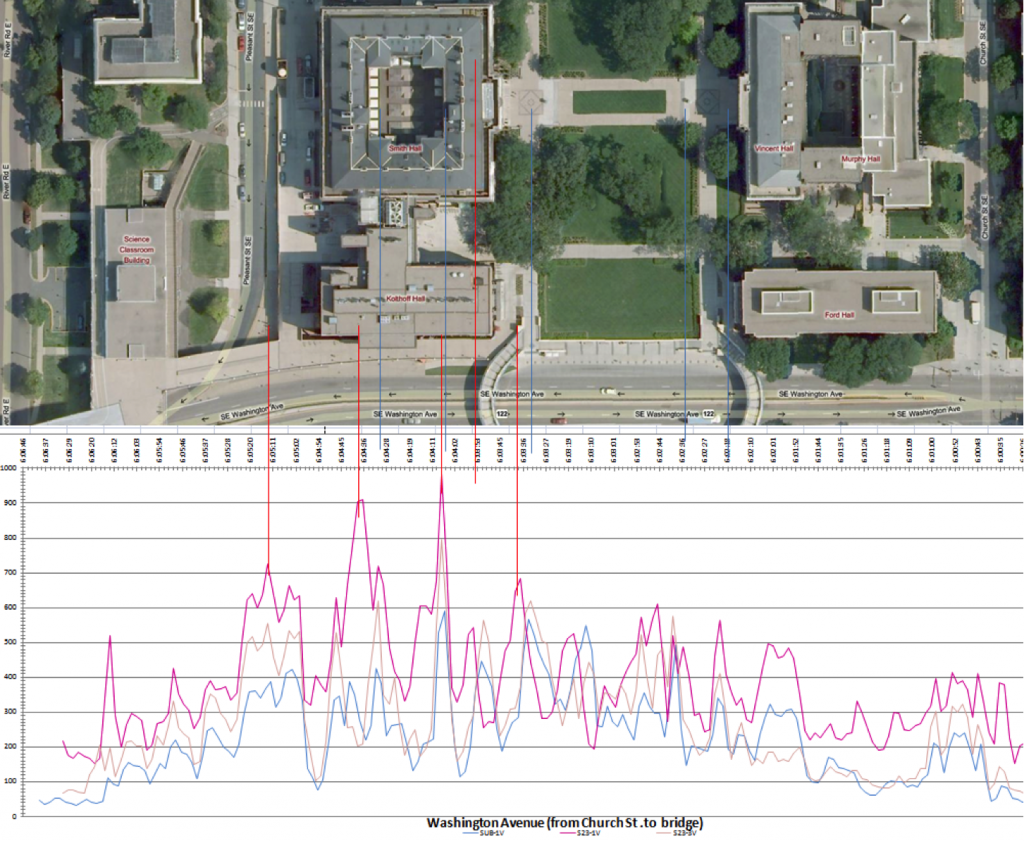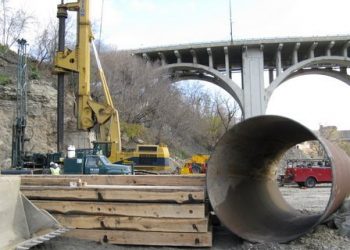Proactively monitor vibration where construction is taking place in close proximity to sensitive equipment and processes.
State-of-the-art vibration monitoring services from ESI Engineering give contractors, engineers, and owners peace of mind at sensitive sites where data is required over long durations such as days, weeks, or even months. When vibration exceeds specified limits, stakeholders are alerted immediately via computer or smartphone so corrective action can be taken. Low amplitude measurements can be made for the most sensitive criteria in acceleration, velocity, 1/3 octave band, RMS and peak particle velocity (PPV) units.
Vibration and construction monitoring benefits a variety of facilities, including:
- Microelectronics manufacturing facilities
- Hospitals
- Research laboratories
- Data centers
- Broadcast and recording studios
- Other sensitive locations
- Historic structures
- And more
Our engineers go above and beyond typical construction monitoring to ensure that your site or equipment is protected and continues to deliver high performance.

What Is Vibration Monitoring?
Vibration monitoring is the process of measuring, recording, and analyzing the movement of structures, equipment, or the surrounding environment. By using specialized sensors and software, engineers can detect changes in vibration levels, identify potential structural issues, and predict failures before they occur.
This proactive approach helps safeguard infrastructure, improve equipment performance, and reduce downtime.
Benefits of Vibration Monitoring
Effective vibration monitoring provides multiple benefits across safety, compliance, and performance:
- Early detection of risks – identify harmful vibrations before they cause structural damage or equipment failure.
- Improved operational efficiency – use data to optimize processes and reduce unnecessary downtime.
- Extended equipment lifespan – monitor wear and tear to schedule maintenance proactively.
- Lower project costs – avoid fines, repairs, or project delays caused by uncontrolled vibrations.
- Greater stakeholder confidence – demonstrate compliance with regulations and best practices.
For many organizations, vibration monitoring is both a compliance necessity and a strategic advantage that reduces liability and increases long-term ROI.

Why Vibration Monitoring Matters in Engineering Projects
Uncontrolled vibrations can compromise safety, shorten equipment lifespan, and create costly project delays. On construction sites, vibration can damage nearby buildings, sensitive medical devices, or utilities. In healthcare or industrial facilities, excessive vibration can interfere with critical operations.
By implementing vibration monitoring:
- Protect nearby structures from construction activity.
- Avoid regulatory penalties by staying compliant with noise and vibration standards.
- Improve project efficiency through data-driven decision making.
- Reduce liability by documenting compliance and performance.
Our Vibration Control Methods
At ESI Engineering, monitoring goes hand-in-hand with vibration control strategies. Once monitoring data is collected, we design solutions to reduce and manage vibration impact, such as:
- Isolation systems – foundations, pads, or dampers that absorb and reduce vibration transmission.
- Structural reinforcement – strengthening or modifying building components to withstand vibration loads.
- Equipment balancing and tuning – adjusting machines to minimize resonance and improve performance.
- Customized mitigation plans – tailored engineering strategies to keep projects compliant and safe.
By combining monitoring with proven control methods, we deliver a comprehensive vibration management program that keeps projects on time, compliant, and safe.
With ESI Engineering, you gain tailored systems that meet the specific requirements of your client and project. We are continuously adding features to our vibration measurement and monitoring system to reduce your risk, provide actionable innovation, and support you in creating better designs and environments.
Some of our recent monitoring projects include:
Frequently Asked Questions About Vibration Monitoring
What types of projects require vibration monitoring?
Any project that produces vibration—such as construction, demolition, tunneling, or heavy equipment operation—may require monitoring to protect nearby structures, comply with regulations, and ensure safety.
What equipment is used for vibration monitoring?
We use geophones, accelerometers, and velocity transducers connected to real-time monitoring systems. These tools provide accurate data and instant alerts if vibration thresholds are exceeded.
How is vibration monitoring different from vibration control?
Monitoring involves measuring and analyzing vibration levels, while control involves strategies to reduce or mitigate those vibrations (e.g., isolation pads, structural reinforcement, or equipment balancing). ESI Engineering provides both.
What regulations apply to vibration monitoring?
Requirements vary by city, state, and industry, but many agencies set strict limits on vibration levels to protect structures and public safety. Our services help ensure compliance with all relevant standards.
Can vibration monitoring prevent equipment breakdowns?
Yes. Continuous monitoring identifies unusual vibration patterns that often signal wear, imbalance, or misalignment—allowing maintenance before costly failures occur.





